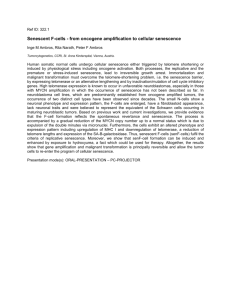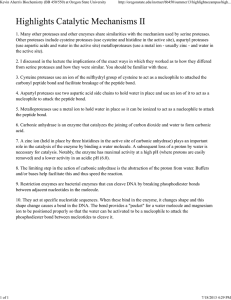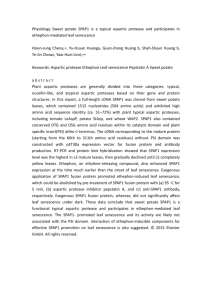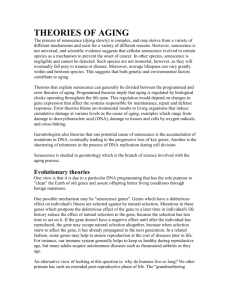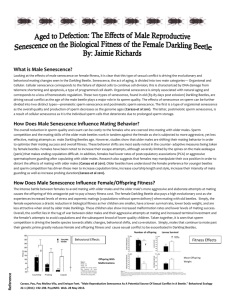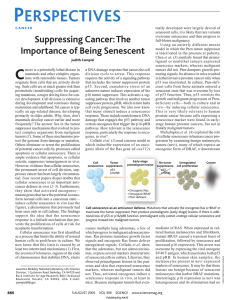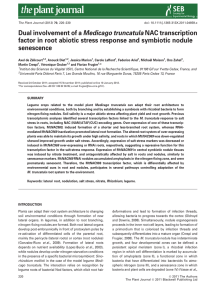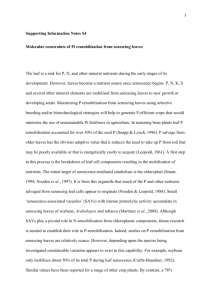Regulation of senescence-specific proteases during the nitrogen
advertisement
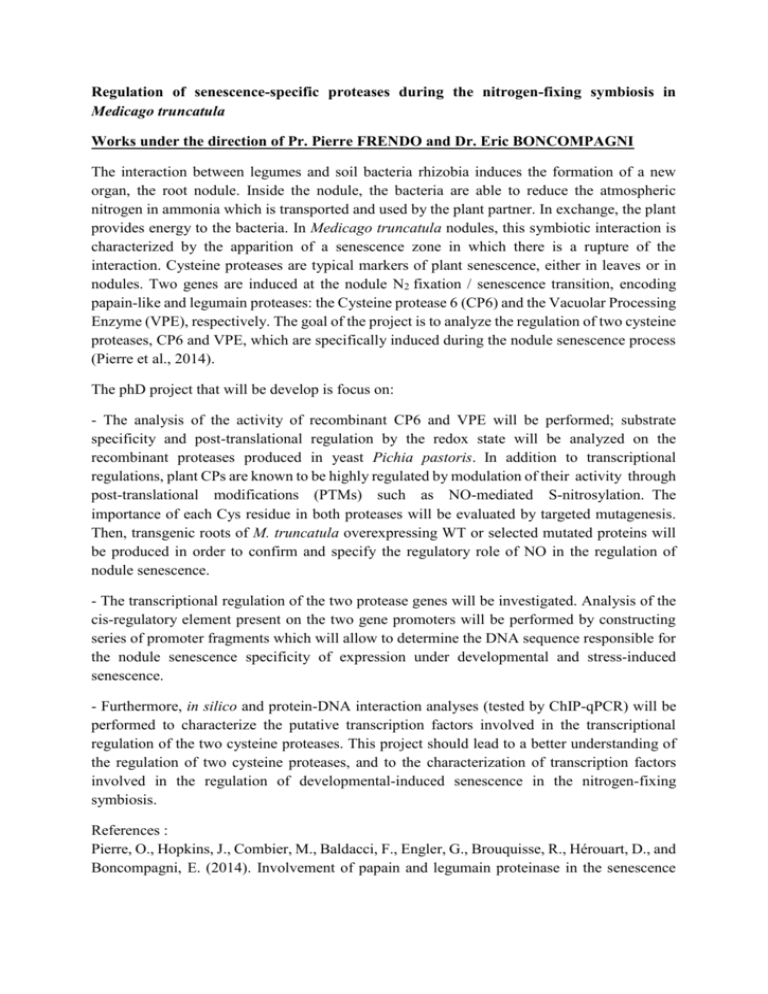
Regulation of senescence-specific proteases during the nitrogen-fixing symbiosis in Medicago truncatula Works under the direction of Pr. Pierre FRENDO and Dr. Eric BONCOMPAGNI The interaction between legumes and soil bacteria rhizobia induces the formation of a new organ, the root nodule. Inside the nodule, the bacteria are able to reduce the atmospheric nitrogen in ammonia which is transported and used by the plant partner. In exchange, the plant provides energy to the bacteria. In Medicago truncatula nodules, this symbiotic interaction is characterized by the apparition of a senescence zone in which there is a rupture of the interaction. Cysteine proteases are typical markers of plant senescence, either in leaves or in nodules. Two genes are induced at the nodule N2 fixation / senescence transition, encoding papain-like and legumain proteases: the Cysteine protease 6 (CP6) and the Vacuolar Processing Enzyme (VPE), respectively. The goal of the project is to analyze the regulation of two cysteine proteases, CP6 and VPE, which are specifically induced during the nodule senescence process (Pierre et al., 2014). The phD project that will be develop is focus on: - The analysis of the activity of recombinant CP6 and VPE will be performed; substrate specificity and post-translational regulation by the redox state will be analyzed on the recombinant proteases produced in yeast Pichia pastoris. In addition to transcriptional regulations, plant CPs are known to be highly regulated by modulation of their activity through post-translational modifications (PTMs) such as NO-mediated S-nitrosylation. The importance of each Cys residue in both proteases will be evaluated by targeted mutagenesis. Then, transgenic roots of M. truncatula overexpressing WT or selected mutated proteins will be produced in order to confirm and specify the regulatory role of NO in the regulation of nodule senescence. - The transcriptional regulation of the two protease genes will be investigated. Analysis of the cis-regulatory element present on the two gene promoters will be performed by constructing series of promoter fragments which will allow to determine the DNA sequence responsible for the nodule senescence specificity of expression under developmental and stress-induced senescence. - Furthermore, in silico and protein-DNA interaction analyses (tested by ChIP-qPCR) will be performed to characterize the putative transcription factors involved in the transcriptional regulation of the two cysteine proteases. This project should lead to a better understanding of the regulation of two cysteine proteases, and to the characterization of transcription factors involved in the regulation of developmental-induced senescence in the nitrogen-fixing symbiosis. References : Pierre, O., Hopkins, J., Combier, M., Baldacci, F., Engler, G., Brouquisse, R., Hérouart, D., and Boncompagni, E. (2014). Involvement of papain and legumain proteinase in the senescence process of Medicago 10.1111/nph.12717. truncatula nodules. New Phytologist. 202(3), 849-63 DOI:
